Note: Measurements taken in the anechoic chamber at Canada's National Research Council can be found through this link.
Reading SoundStage! Global’s coverage of the High End 2018 audio exhibition, in Munich, Germany, I was amazed and dismayed at how exclusive so much of it is. High End is the biggest event on the audio calendar, where companies, journalists, and consumers congregate each year to discover the industry’s latest and greatest -- but many of the new products introduced at HE2018 retailed for tens or even hundreds of thousands of dollars.
Fortunately, as demonstrated by a new line of affordable loudspeakers debuted by Monitor Audio last year, at High End 2017, not everything is aimed at the well heeled. While in Munich at that show, Hans Wetzel wrote an article highlighting the British firm’s new Silver Series speakers, and ever since reading it I’ve been curious to hear one of the new Silver models -- especially as I’d been so impressed by Monitor’s Silver 6 when I reviewed it for SoundStage! Access in 2014. My wish was unexpectedly granted when I received for review a pair of the smallest floorstander in the revamped line, the Silver 200 ($1500 USD per pair).
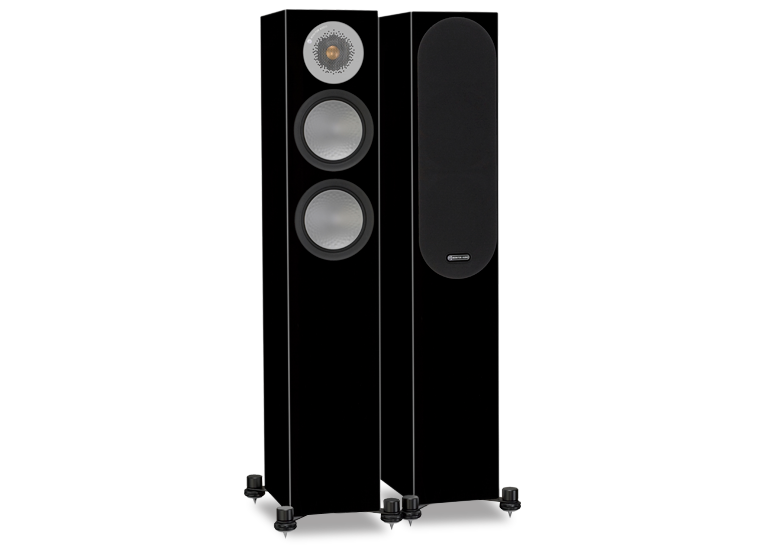
Description
Although technical changes aimed at improved sound have been introduced in this most recent iteration of Monitor’s venerable Silver Series, I’ll start by discussing the speaker’s appearance. It’s difficult to avoid making superficial judgments of a product before you even hear what it can do, and in the case of the Silver 200, my initial bias was positive. This speaker looks good in photos, but I didn’t realize how good until I saw a pair of them in person, when their modest dimensions and clean lines quickly earned my further admiration. At 34.8”H x 6.5”W x 9.5”D (or, with the included outrigger plate, feet, and spikes installed, 36.1”H x 9.1”W x 12.1”D), the Silver 200s looked almost tiny next to the Revel Performa3 F206es they replaced for this review. Then again, each Silver 200 weighs 32.2 pounds -- it’s hefty for its size. I don’t mind big speakers, within reason, but after spending some time with the 200s, I loved how unobtrusive they were in my downtown apartment. Besides, if a small speaker can sound big, I far prefer the additional space its smaller footprint frees up.
The Silver 200s looked superb. The review pair arrived in a real-wood walnut veneer (black oak, rosenut, natural oak, high-gloss black, and satin white are also available), impeccably finished, with rounded edges and no visible mounting hardware securing the drivers. The matte-gray plate of perforated metal covering the gold dome tweeter looks sharp, as do the metal midrange-bass and bass drivers with their black rubber surrounds. The outrigger plate, feet, and spikes look even sturdier and of higher quality than those on the previous generation of Silvers, which is commendable -- I’d thought the base on the Silver 6 already looked pretty good. Overall, the Silver 200’s front baffle is clean and modern, and the warm walnut veneer lends it a classic look. Consistent with its minimalism, the grilles attach magnetically -- no holes are drilled in the baffle for mounting pegs. I appreciated this, as I never used the grilles.
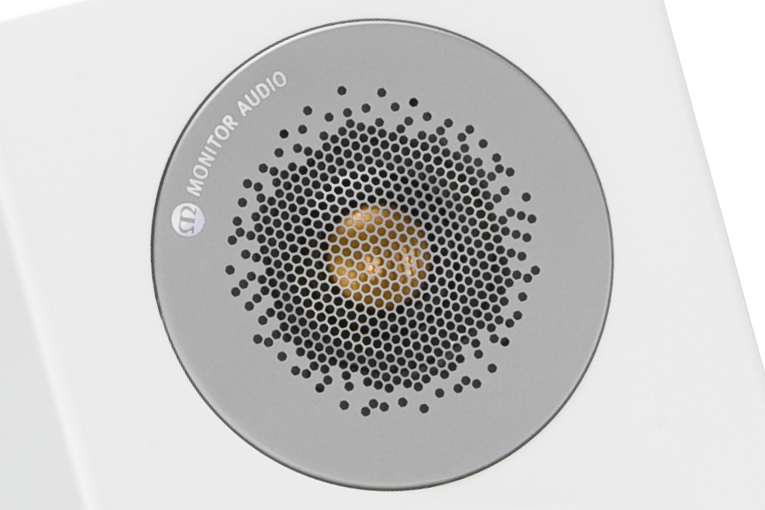
All drivers have been updated from the previous Silver generation. The 1” (25mm) gold-dome tweeter of ceramic-coated aluminum magnesium (C-CAM) is new, which Monitor claims produces less distortion than any Silver tweeter to date. C-CAM was developed by the aerospace industry for use in jet-engine components, and Monitor has been using it for years to make their drivers. The 5.25” midrange-bass and woofer cones are also made of C-CAM, and the surface of each is patterned with small dimples. Monitor calls this their Rigid Surface Technology (RST), and says it originated in origami and is based on the fact that making small, precise folds in the surface of a light material (such as an ultrathin metal cone) increases its rigidity. Each driver is housed in a separate chamber that has been differentially tuned, this extra bracing providing the benefit of increasing the cabinet’s rigidity.
The new 5.25” drivers are also deeper, thus enabling more extension into the upper midrange, and better linearity from the upper midrange to the low treble. Monitor claims that the new cone profile offers better damping and improves midrange clarity.
The Silver 200 is a 2.5-way design: the woofer is crossed over at 700Hz to the midrange-bass driver, which in turn hands off to the tweeter at 2.9kHz. With a nominal impedance of 8 ohms (dipping to a minimum of 4.7 ohms) and a sensitivity of 89dB, the Silver 200 doesn’t need much power to come to life -- Monitor recommends anything from 60 to 150Wpc. My Bryston B135 SST2, a 135Wpc integrated amplifier, had no problem getting them to play more loudly than I could tolerate.
The Silver 200 replaces the Silver 6 in some ways but not all. For starters, the 6 is quite a bit bigger than the 200, and while both models are 2.5-way designs with a woofer, midrange-bass, and tweeter, the 6 had 6” bass and midrange-bass drivers; the 200 has 5.25” cones. Furthermore, one of the 6’s ports was on the front baffle, below the woofer, and the second on the rear panel, behind the tweeter; in the 200, both ports are in back, one each near the top and bottom of the rear panel. The ports themselves remain the same: Monitor’s HiVe II port design, with its unique surface designed to accelerate the flow of air to minimize noise.
System
The Silver 200s replaced a pair of Revel F206es in a system powered by my Bryston B135 SST2 integrated. Monitors and amp were linked by AudioQuest Comet speaker cables terminated in banana plugs. A Panasonic DMP-BDT210 BD player served as a transport for a Bryston BDA-2 digital-to-analog converter via a NexxTech optical cable. Additional digital content was provided by an Apple MacBook computer running Audirvana software and connected with an AudioQuest Forest USB link. The BDA-2 was linked to the B135 with Kimber Kable’s Tonik RCA interconnects. To play vinyl I used a Thorens TD 160HD turntable, Rega Research RB250 tonearm, and Dynavector DV10x5 high-output moving-coil cartridge, in conjunction with a Lehmann Audio Black Cube phono stage. All electronics were plugged into an ExactPower EP15A power conditioner-regenerator.
Sound
When I first sat down to some critical listening to the Silver 200s, I played Eddie Vedder’s original music for the film Into the Wild (CD, J Records 88697-15944-2). With “Society” the Monitors sounded fine -- the midrange was clear and the overall sound was clean -- but lacked the huge illusion of space created by all the reverb engineered into this track. I appreciated that Vedder’s voice was lucid and a touch forward, commanding my attention more than usual, but I’ve heard this track sound better -- it was apparent that these speakers would benefit from some boundary reinforcement. Moving them closer to the wall behind them achieved the desired effect: The low end was given a boost, which helped restore some of the feeling of space I typically enjoy in this track. The Silver 200s come with four foam port plugs to help tune them to your room by reducing bass output, but as you can probably guess, I never used them.
With the speakers positioned closer to the wall, the bass had a warm, pleasing thump in “Moon,” from Björk’s Biophilia (16-bit/44.1kHz AIFF, Nonesuch). The Silver 200s weren’t able to dig really deep, but still laid a nice foundation for this song. Monitor specifies this speaker’s low-end limit as -6dB at 38Hz -- they can’t be expected to pound out deep bass. If you want that, you’ll need to add a subwoofer or look at buying a pair of the bigger Silver towers, perhaps the 300 ($2000/pair) or 500 ($2500/pair). In “Moon,” Björk’s layered vocals were precisely outlined across the stage, each track occupying a distinct space. After hearing the opening notes from the first harp (there are four), I toed the speakers in until their tweeter axes crossed just behind my head. Aural images were now tighter and better focused.
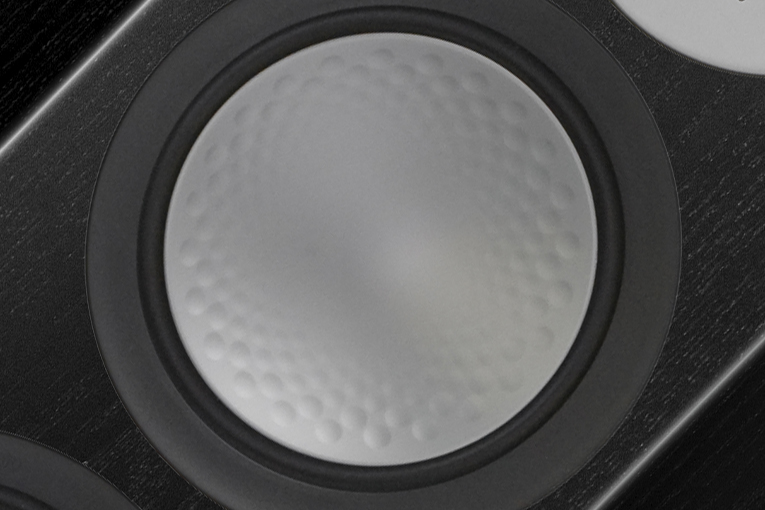
With Björk’s “Crystalline,” the 200s generated a wide stage populated by well-defined images. This track’s explosive tempo at the end was well served by the speakers’ terrific clarity, which made it easy to sort out what was happening in the music. They weren’t able to conjure up the deep, visceral bass of this track, though I suppose if I’d moved them even closer to the wall I could have gotten additional low end. However, I tend to place speakers as far out from the wall as I can, to enjoy a more three-dimensional stage, and the Silver 200s were no exception. As much as I enjoy good bass, reproducing a credible soundstage matters more to me.
I moved on to “Your Rocky Spine,” from Great Lake Swimmers’ Ongiara (16/44.1 AIFF, Nettwerk 30691 2). The 200s were adept at conveying the warm thump of the kick drum, and the various acoustic stringed instruments in this recording were spread across a broad stage. In my third and final adjustment to their setup, I pulled the Monitors a tad closer to me; this produced a greater sense of immediacy in the music, giving a more forward sound while conceding little in the bass. Pleased with this setup, I didn’t move the speakers again.
In “Flat of the Blade,” from Massive Attack’s Heligoland (16/44.1 AIFF, Virgin 5 9466 2), the voices hung suspended above and in front of the plane of the speakers. Again, I was treated to a wide stage that extended beyond the outer edges of the speakers themselves. I was glad I’d pulled them farther out from the front wall -- I was rewarded with a deeper stage that did a better job of filling the front of my listening room.
The Silver 200 was highly transparent, as demonstrated by Beethoven’s song “An die Hoffnung” (To Hope), Op.94 (CD, Hyperion CDA67055). This is a less complex recording in that it features a single singer accompanied by a single piano, in this case played by Roger Vignoles. The voice of baritone Stephan Genz was finely detailed and positioned squarely between the speakers, which did a good job of conveying his enunciation of Christoph August Tiedge’s text. Genz is a powerful singer -- at one point his delivery is so explosive that an unsuspecting listener could be jolted upright. The British towers were effortless in handling this performance’s shifts in dynamics, and sounded bigger than they look.
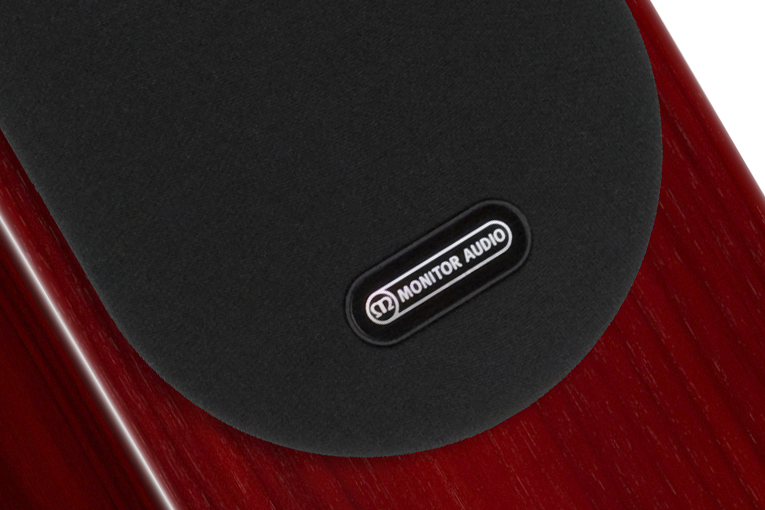
When I played Glenn Gould’s 1981 recording of J.S. Bach’s Goldberg Variations, from A State of Wonder: The Complete Goldberg Variations (1955 and 1981) (Sony Classical/Legacy S3K 87703), the Silvers were able to articulate the sound of the hammers striking the strings of Gould’s Steinway, making it easy to discern the intensity with which the keys were struck to produce the notes. Though far lower in level than the piano, Gould’s humming was still highly audible, rewarding the listener with a bit of insight into how this eccentric pianist connected with and interpreted Bach’s music as he performed it. Unlike in the disc of Beethoven songs, the focus in the Goldberg Variations is the piano -- the Monitors were praiseworthy in how well they imparted to me plenty of detail and the instrument’s tone, as Gould’s fingers danced quickly across the keys in the sometimes frenzied paces on this well-known recording.
The Minnesota Orchestra, conducted by Eiji Oue, had great depth in the Andante con moto (Tempo di valse) of Rachmaninoff’s Symphonic Dances (CD, Reference RR-96CD). This was even more pronounced by the front of the orchestra, which made it seem as if I was hearing them from just a few rows back in the hall. The blare of the brass that opens the piece was incredibly vivid, its reverberation communicating the size of the hall. In my experience, good-quality bookshelf models often image quite well, and are better at “disappearing” than larger speakers; in this sense, the Silver 200s performed more like bookshelf speakers in their ability to create a tightly focused and detailed soundstage, while also producing weightier bass than most bookshelfs. Given their small size, I was pleasantly surprised by how well they handled the wide dynamic ranges of recordings such as Symphonic Dances and the disc of Beethoven songs. With these and other recordings, the Silver 200s produced a lot of energy in my listening room. Those who want a more visceral experience will likely add a subwoofer, though I suspect most people who buy a pair of Silver 200s will be more excited by what they can do than worried about what they can’t.
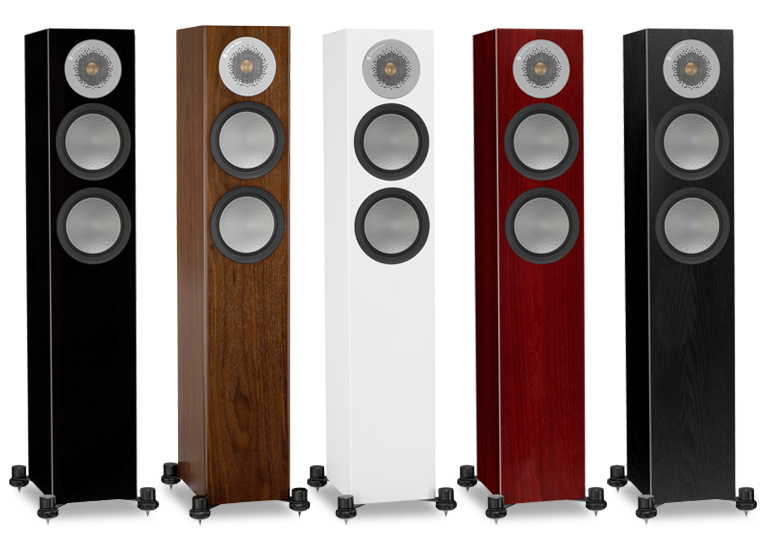
In “There’s No Home for You Here,” from the White Stripes’ Elephant (CD, Third Man 63881-27148-2), the sound of the cymbal of Meg White’s drum kit was impressively clean. The shimmer of the metal plate emerged from behind the speakers to convey a good sense of stage depth; the screech of electric guitar and thump of kick drum invigorate this blues-rock tune, and encouraged me to turn up the volume. Jack White’s acoustic guitar in “You’ve Got Her in Your Pocket” was lucid but not overly warm, a nice accompaniment to his voice, which seemed to hang in space. This track is a rare intimate moment on Elephant, and the 200s conveyed it well. With the next track, “Ball and Biscuit,” the sound flips 180° -- it’s back to crunching guitars and hearty, fleshed-out percussion, both of which the Silvers handled with aplomb. Elephant is one of the better-sounding rock albums I own -- the spaciousness of the mix helps keep voices and instruments well separated and distinct from one another -- but despite the commendable transparency of the sound, it still has the grittiness and edge that are essential to its power. It was a joy to hear all of this through the Monitor Audios.
Comparison
At $3500/pair, Revel’s Performa3 F206 tower speakers cost $2000 more than Monitor’s Silver 200s, though for that price you get a lot more speaker. The F206 is a three-way design with a 1” aluminum-dome tweeter, a 5.25” aluminum midrange, and two 6.5”, aluminum-cone woofers. It stands 41.4”H x 9.8”W x 13.7”D, and its weight of 58 pounds is nearly twice that of the Silver 200. Revel specifies the F206’s low end as going down to 36Hz, -6dB -- surprisingly, only 2Hz lower than the much smaller, lighter Monitor.
As I listened again to “Society,” Eddie Vedder’s voice sounded slightly farther away through the F206es than through the 200s. Through the Revels, the vocals sounded not only farther back, but were surrounded by what sounded like a greater amount of space. While I imagine some listeners will prefer the Monitors’ more immediate sound, to me the Revels sounded more natural, at least in the context of a studio recording. I’m not suggesting that the Silver 200’s reproduction of the midrange was too forward, but in direct comparison with the Revels, the music was a touch closer to me.
With “Angel,” from Massive Attack’s Mezzanine (CD, Virgin 8 45599 2), the Silver 200s did a respectable job of digging down to reproduce this track’s thumping bass with laudable weight. But two 5.25” woofers in a small cabinet can play only so loudly. With its 6.5” woofers and big enclosure, the Revels were better at conveying this track’s brooding, murky mood, which greatly depends on its subterranean bass -- which neither pair of speakers could fully reproduce. “Inertia Creeps,” also from Mezzanine, was a treat through the Monitors and the Revels -- the clean character of each pair of speakers helped communicate the music’s vibrancy, and easily delivered its energetic rhythm.
With Beethoven’s “An die Hoffnung,” the Monitors acquitted themselves nicely alongside the bigger, more expensive Revels. The Silvers and Performa3s each provided a clean, detailed sound with a convincing illusion of space around singer and piano. Even in the song’s louder moments, the Monitors showed some muscle in reproducing baritone Stephan Genz’s wide dynamic shifts, and approached the power of the Revels. Although the Silver 200s never sounded strained or congested with this music, the Performa3 F206es were even more effortless in their ability to communicate the musicians’ authority.
The Monitor Audio Silver 200 and Revel Performa3 F206 are both excellent speakers for their prices, and it’s unlikely that anyone shopping in the price range of one would consider anything in the range of the other. The Silver 300 would be a more natural competitor for the F206, if not on the basis of price, then at least in the similarities of their sizes and driver configurations. Within its physical limits, the Silver 200 held up well against the Performa3 F206, offering a high degree of transparency, precise imaging, and punchy, well-controlled sound. However, as good as the Monitors were, the Revels are still the best-sounding speakers I’ve had in my listening room. It would have been quite an accomplishment for the Silver 200s to have outperformed them at less than half the price.
Conclusion
In the Silver 200, Monitor Audio has produced another solid offering. It’s easy to imagine pairs of these speakers taking up residence, in rooms of small to medium size, in the homes of those who highly value the marriage of form and function -- I suspect that the Silver 200’s combination of clean, dynamic sound, small size, gorgeous appearance, and excellent build quality will mean that Monitor will see a lot of them leaving the factory. The Silver 200 excels in all of these areas, at a price that seems a mere pittance compared to many other speakers on the market. If you’ve been considering bookshelf speakers but want the additional fullness of sound that towers can offer, you’d be doing yourself a disservice if you didn’t audition the Silver 200.
. . . Philip Beaudette
philipb@soundstagenetwork.com
Associated Equipment
- Speakers -- Revel Performa3 F206
- Integrated amplifier-DAC -- Bryston B135 SST2
- Digital sources -- Panasonic DMP-BDT210 DVD player (as transport), Bryston BDA-2 DAC, Apple MacBook computer running Audirvana
- Analog source -- Thorens TD 160HD turntable, Rega Research RB250 tonearm, Dynavector DV-10X5 high-output MC cartridge, Lehmann Audio Black Cube phono stage
- Speaker cables -- AudioQuest Comet
- Interconnects -- Kimber Kable Tonik
- Digital links -- AudioQuest Forest USB, NexxTech TosLink
- Power conditioner -- ExactPower EP15A
Monitor Audio Silver 200 Loudspeakers
Price: $1500 USD per pair (add $150/pr. for high-gloss black).
Warranty: Five years parts and labor.
Monitor Audio Ltd.
24 Brook Road
Rayleigh, Essex SS6 7XL
England, UK
Phone: +44 1268-740580
Fax: +44 1268-740589
E-mail: info@monitoraudiousa.com
Website: www.monitoraudiousa.com
North American distributor:
Kevro International
902 McKay Road #4
Pickering, Ontario L1W 3X8
Canada
Phone: (800) 667-6065, (905) 428-2800
Fax: (905) 428-0004
E-mail: info@kevro.com
Website: www.kevro.com






















